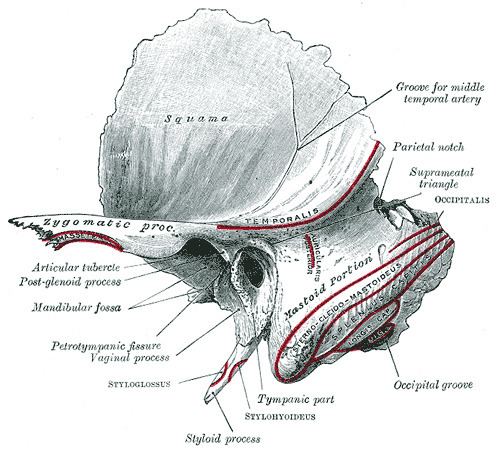Latin Fissura petrotympanica TA A02.1.06.074 | Dorlands/Elsevier f_08/12365631 FMA 55463 | |
 | ||
The petrotympanic fissure (also known as the squamotympanic fissure or the glaserian fissure) is a fissure in the temporal bone that runs from the temporomandibular joint to the tympanic cavity.
Contents
The mandibular fossa is bounded, in front, by the articular tubercle; behind, by the tympanic part of the bone, which separates it from the external acoustic meatus; it is divided into two parts by a narrow slit, the petrotympanic fissure.
It opens just above and in front of the ring of bone into which the tympanic membrane is inserted; in this situation it is a mere slit about 2 mm. in length. It lodges the anterior process and anterior ligament of the malleus, and gives passage to the anterior tympanic branch of the internal maxillary artery.
Eponym
It is also known as the "Glaserian fissure", after Johann Glaser.
Contents
The contents of the fissure include communications of cranial nerve VII to the infratemporal fossa. A branch of cranial nerve VII, the chorda tympani, runs through the fissure to join with the lingual nerve providing special sensory (taste) innervation to the tongue.
